Two years ago, I watched a Soyuz launch to the International Space Station on NASA TV. I was inspired to write a blog post about how both the Soyuz rocket and spacecraft represent at once technological continuity and change. The basis of the Soyuz rocket is the R-7 Semyorka missile, which first flew in 1957. Space launchers derived from the Semyorka have been launching satellites and spacecraft into orbit since Sputnik 1.
Back when I was in high school, I built and flew a model rocket of another Semyorka-derived space launcher, the Vostok rocket. The model was based on plans by Peter Alway, scale model rocketeer extraordinaire and author of the ever-fascinating (and now apparently back-in-print!) Rockets of the World. Alway had posted the plans on his website (now offline). The geometry of the Semyorka is pretty complex, with lots of tapered cones and tubes of different diameters. Alway simplified the geometry a little and called his plan “Simplified Vostok.”
My own Simplified Vostok was difficult to build, and it took me a couple of years to complete it. The one time I launched the rocket, it had a rough landing, and some of the boosters (made out of paper) got damaged. Years later, I put the rocket on display in my office, with the damaged parts turned toward the wall.
Some time after I watched the 2020 Soyuz launch and wrote the blog post about it, it occurred to me that I could adapt the Simplified Vostok plans to make a Soyuz rocket, or in this case “Simplified Soyuz.” Right around this time, NASA was commemorating the twentieth anniversary of the Expedition 1 mission, the first crew rotation on the International Space Station, which launched on a Soyuz rocket on October 31, 2000. I decided that this would be a good Soyuz launch to portray in my own model.
To convert the Simplified Vostok plans to Simplified Soyuz, I had to lengthen the rocket, as the Soyuz rocket has a larger upper stage than the Vostok rocket did. I also had to redesign the nose cone.
The Soyuz spacecraft has an escape tower, which is used to pull the crew cabin away from the rocket in the event of an emergency. (Mercury and Apollo spacecraft also had escape towers, as does the Orion spacecraft. Vostok had an ejection seat for the lone cosmonaut inside.) Initially, I thought that I would craft the escape tower out of dowels, but I decided instead to try using a new technology that hadn’t been available when I was building rockets twenty years earlier: 3D printing.
Using FreeCAD, I designed a nose cone with an escape tower, basing it off of data in Rockets of the World. I exported the design to an .stl file and ordered a plastic print of it from Shapeways. I ordered two copies of it, in case I messed one of them up, but this turned out not to be necessary. The printed piece was rough, so I had to putty and sand the surface multiple times until I was satisfied with the result.
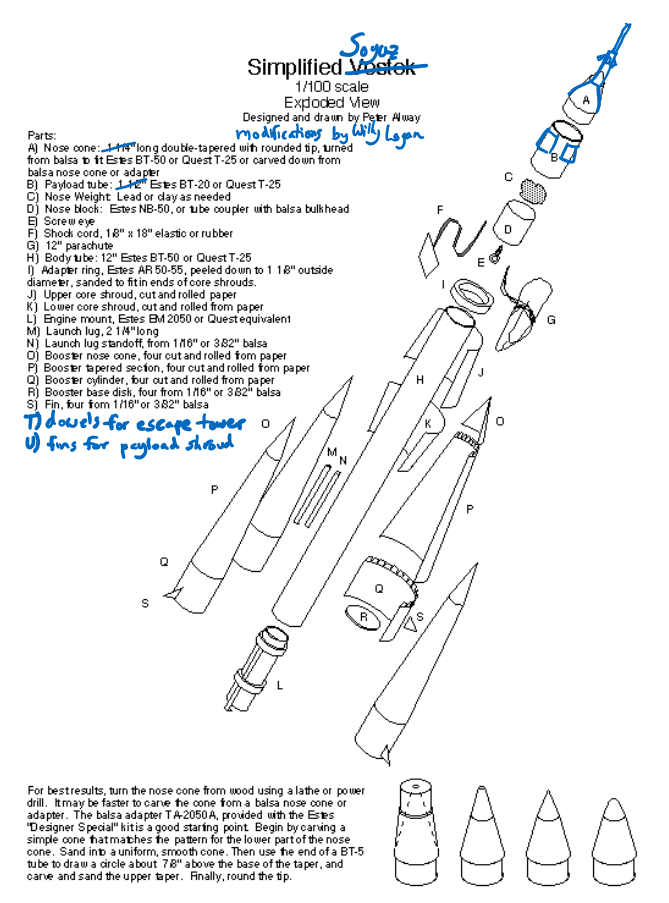
Original Simplified Vostok plans by Peter Alway, with my modifications to make it Simplified Soyuz. When I made these modifications, I hadn’t yet decided that the nose would be a 3D-printed part.
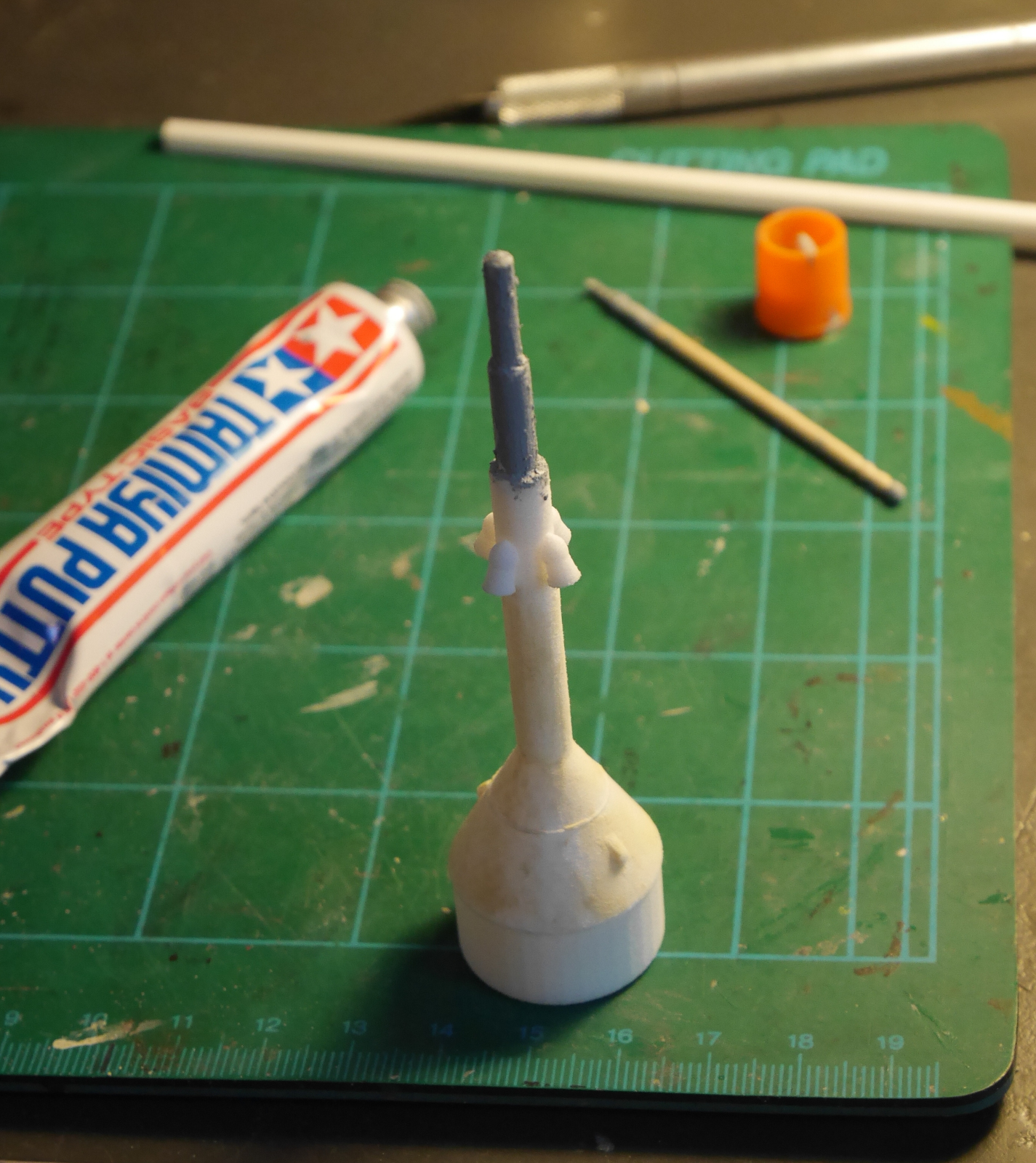
Simplified Soyuz nose cone from Shapeways, with its first layers of putty to make the surface smooth.
The hardest part of building Simplified Soyuz was assembling the paper boosters. Another challenging aspect of this build was adding little details made out of balsa scraps to make the model look more like the real thing. It took me a couple of tries to get the fins of the launch-abort system to look right.
Painting the rocket was also a big challenge, and it took me more than a year to complete. I did most of the painting with an airbrush, which made for a very smooth finish. The final product looks far better than the Vostok model that I built in high school.
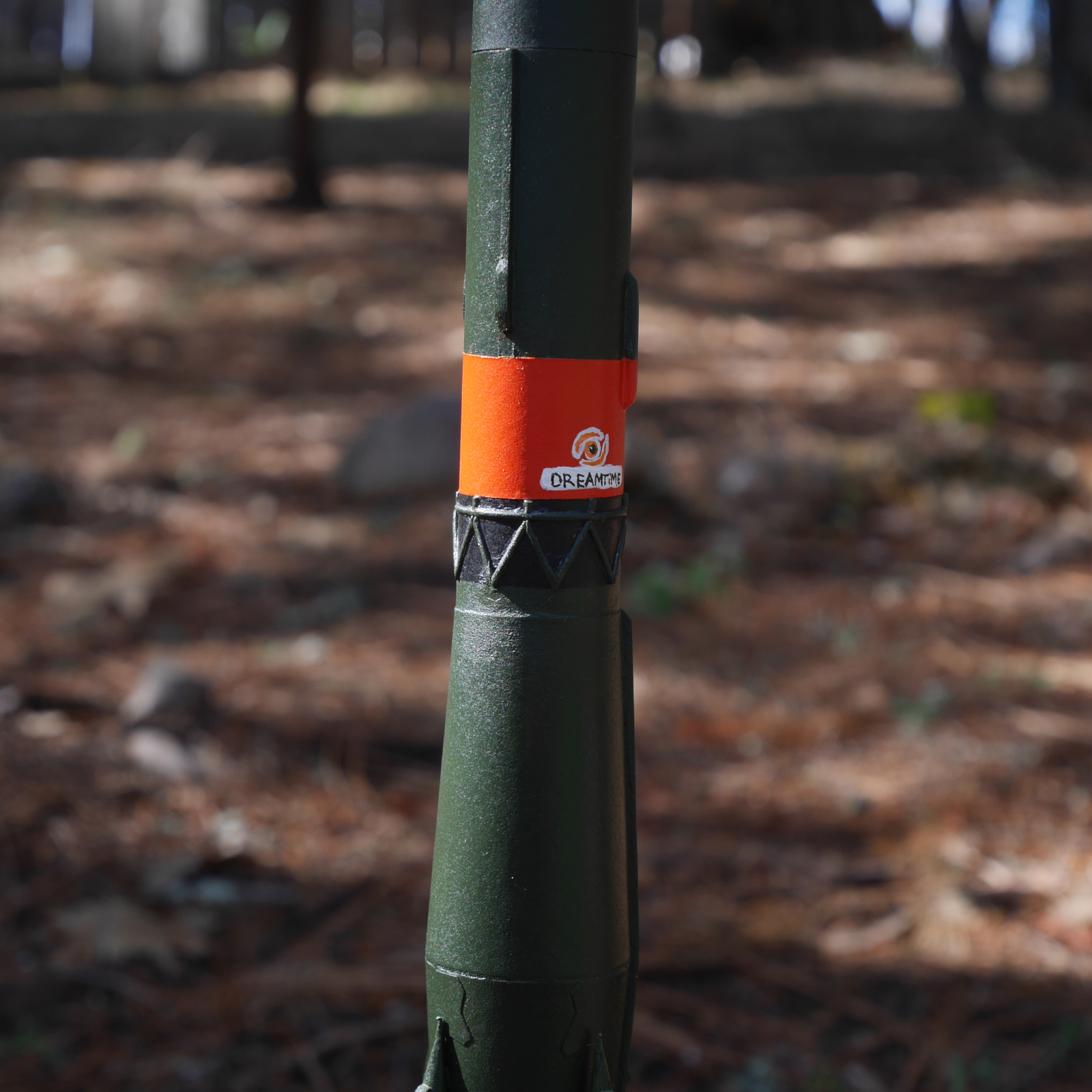
Detail of the interstage between the second and third stages. (This is open trusswork on the real thing. My model only has one stage.)
I built Simplified Soyuz to fly, but I don’t think I will launch it. Thinking back to what happened to Simplified Vostok, I don’t want to risk the same sort of damage to this rocket, at least not any time soon. Maybe later!
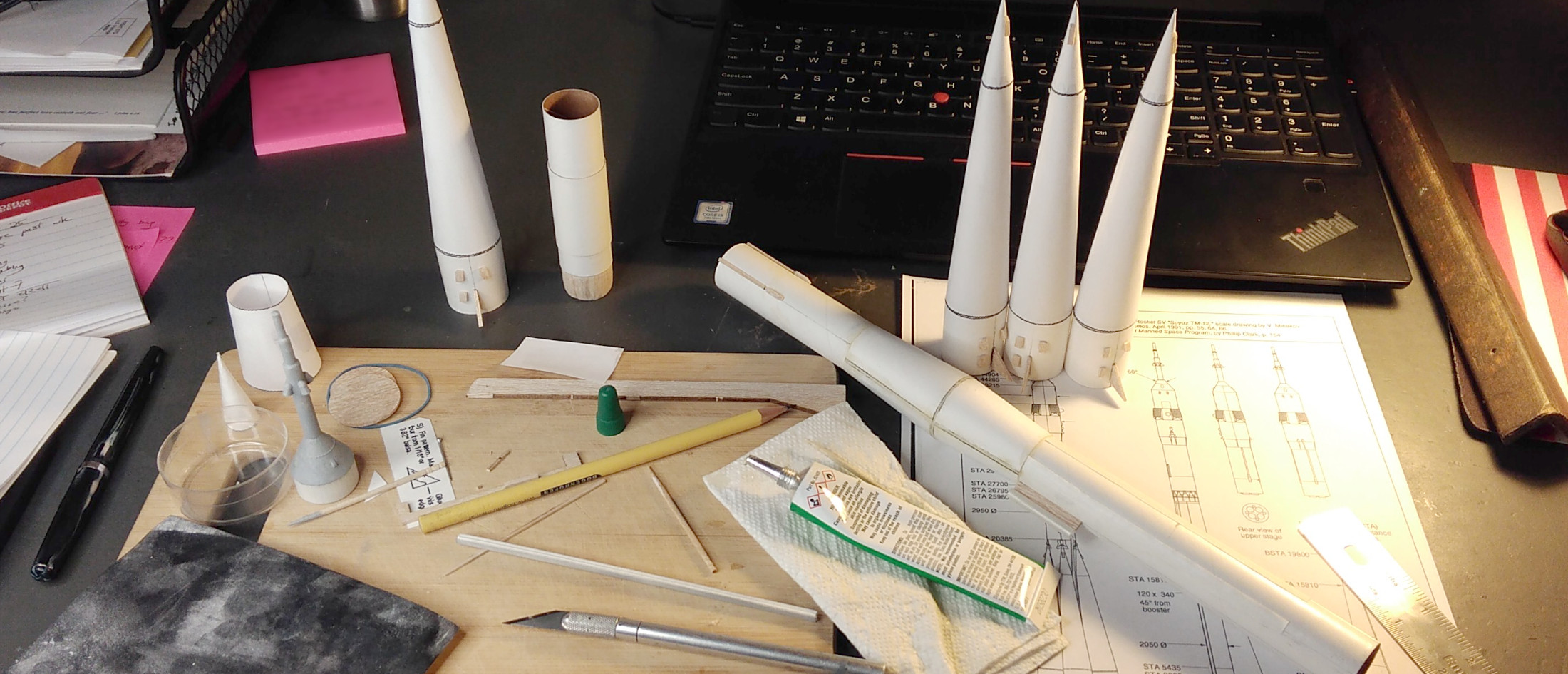
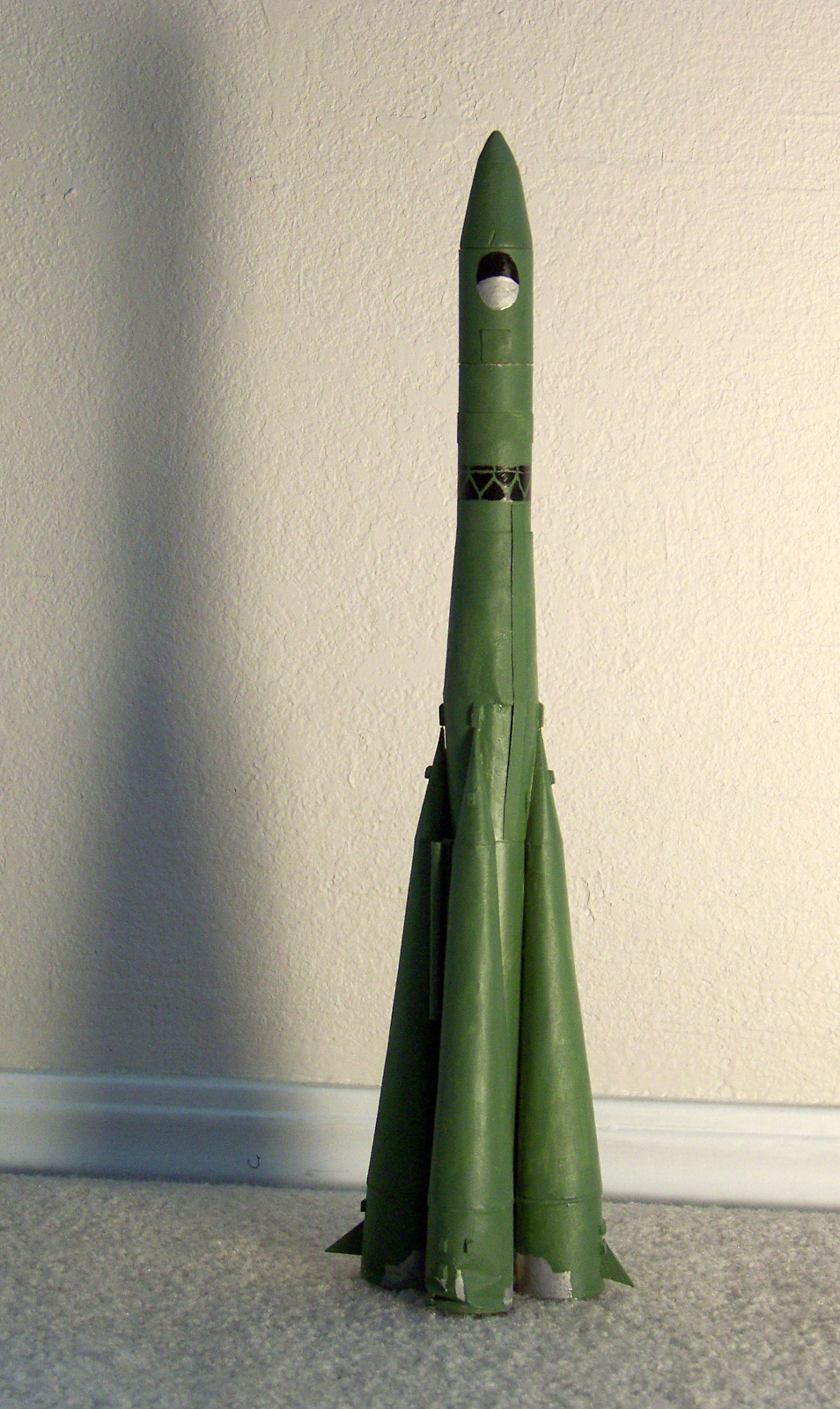

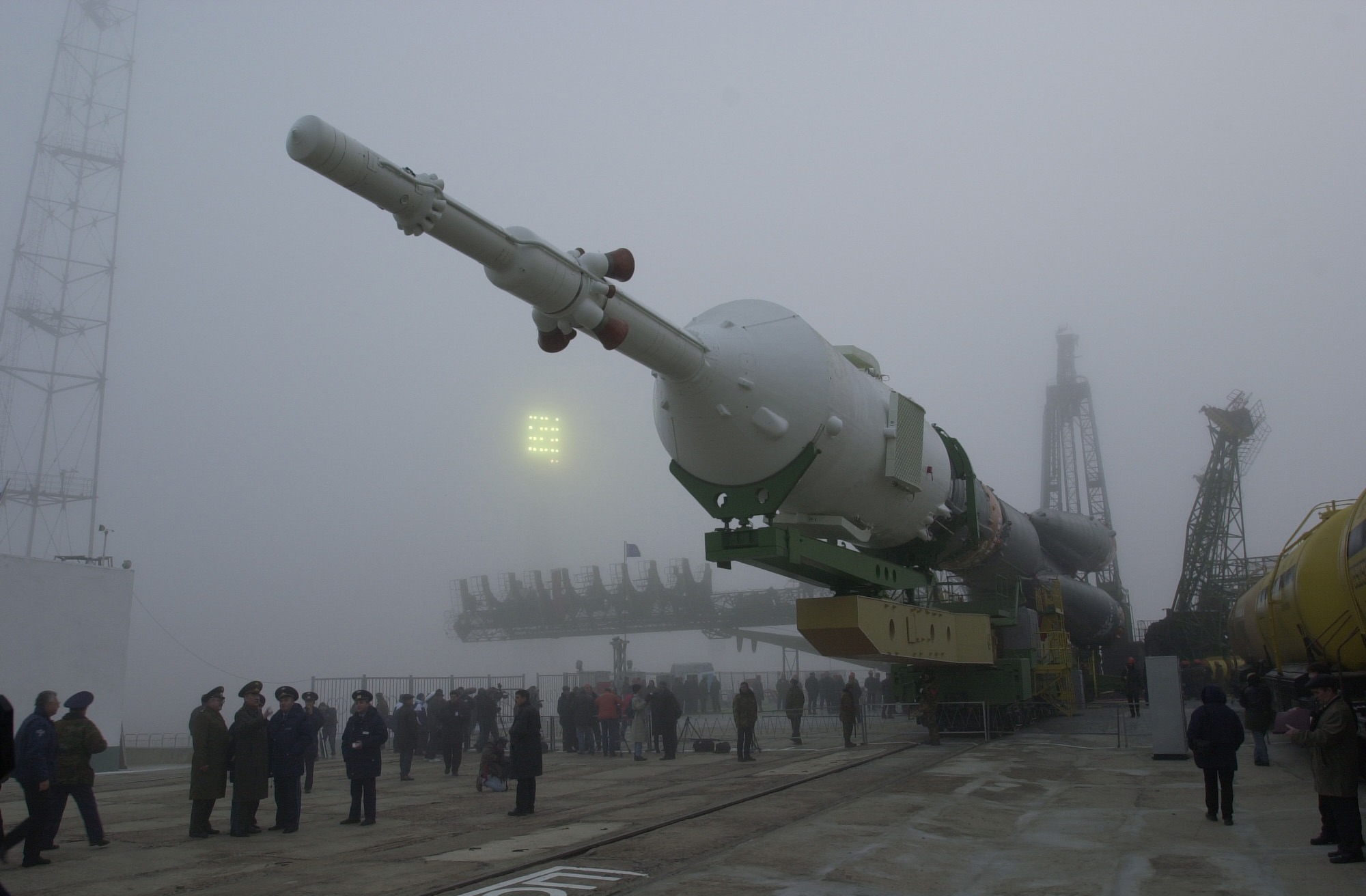
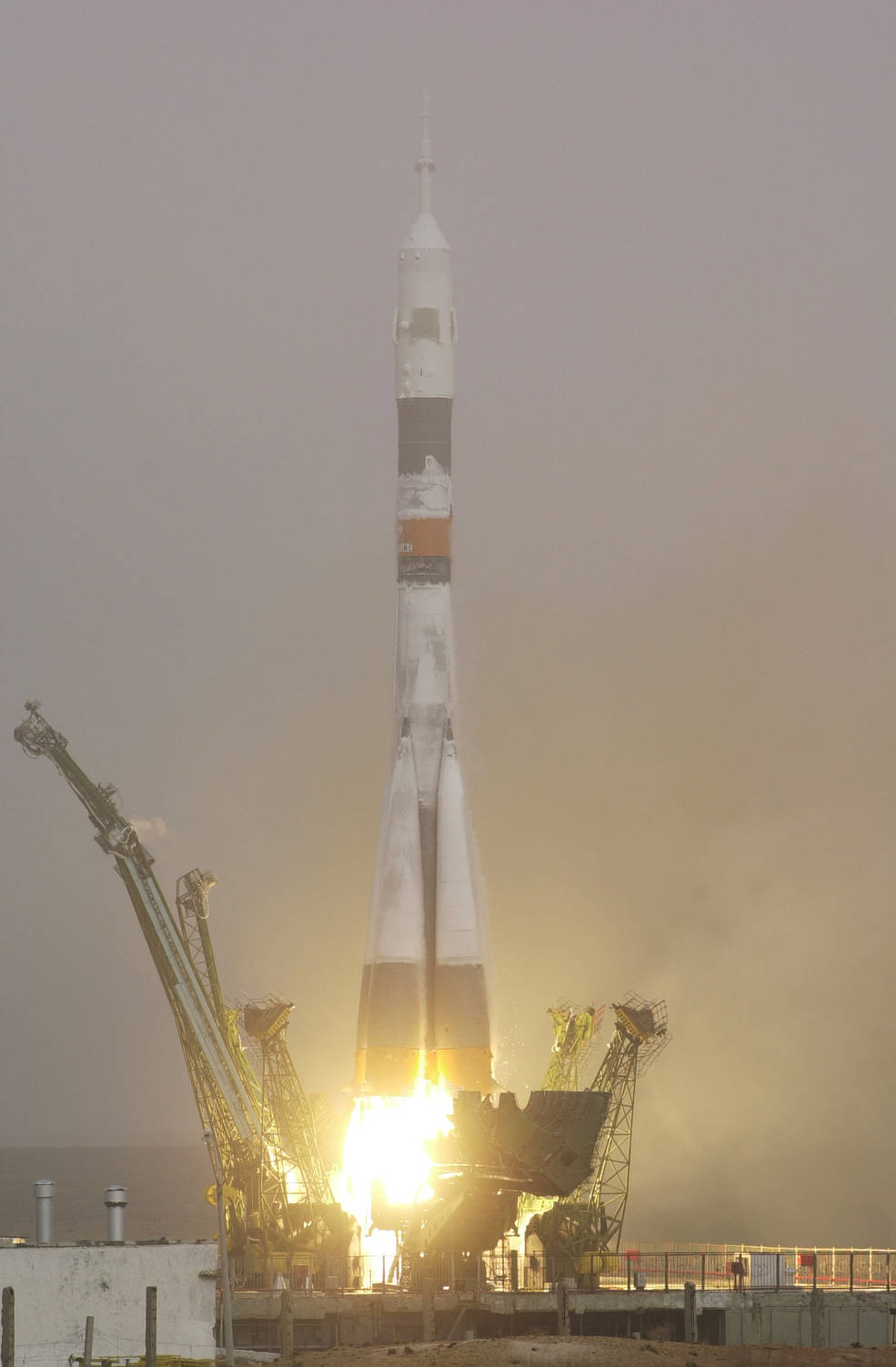
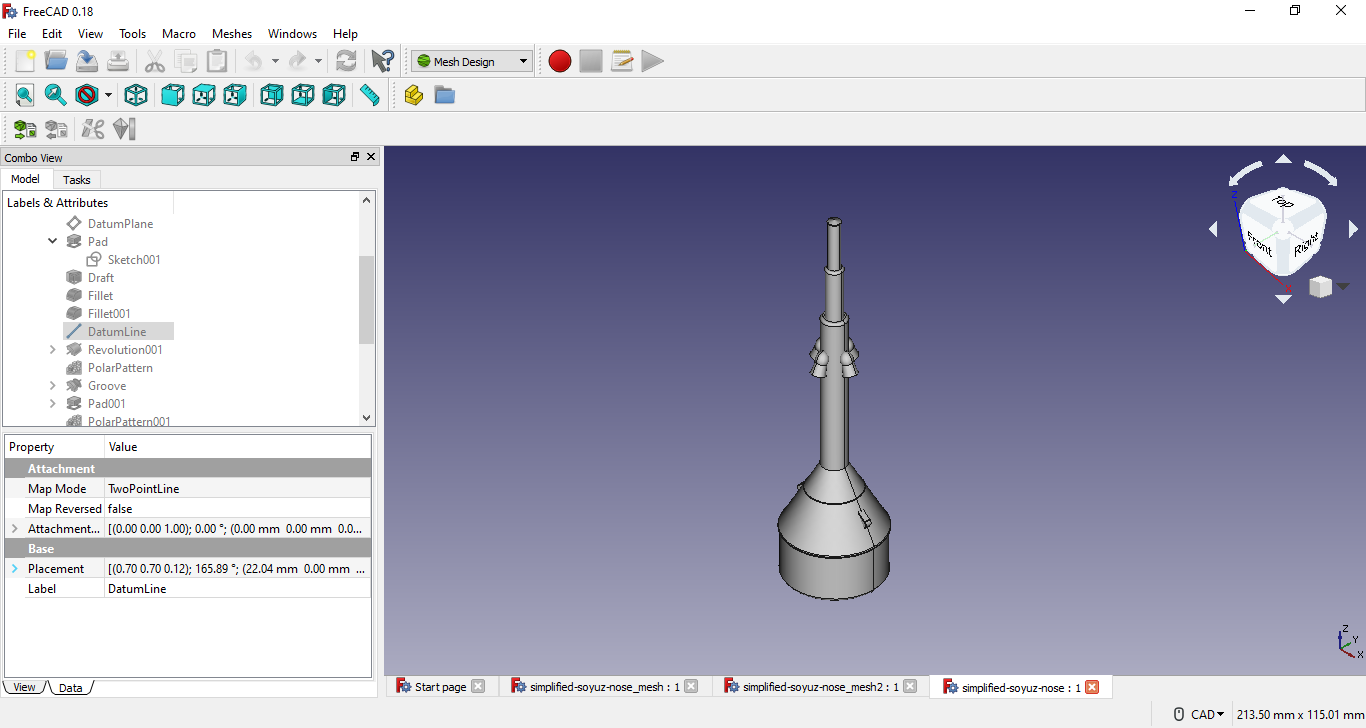
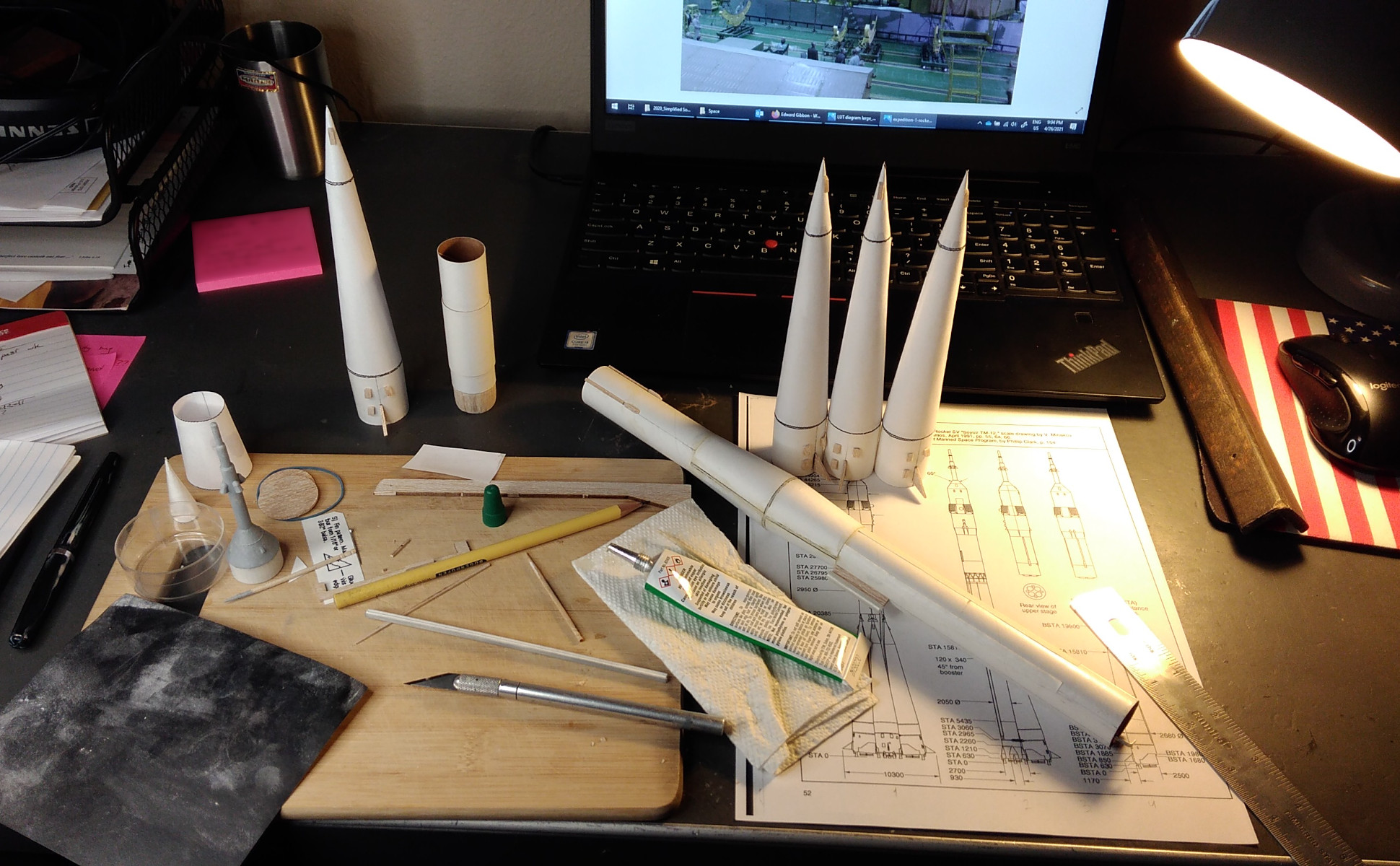
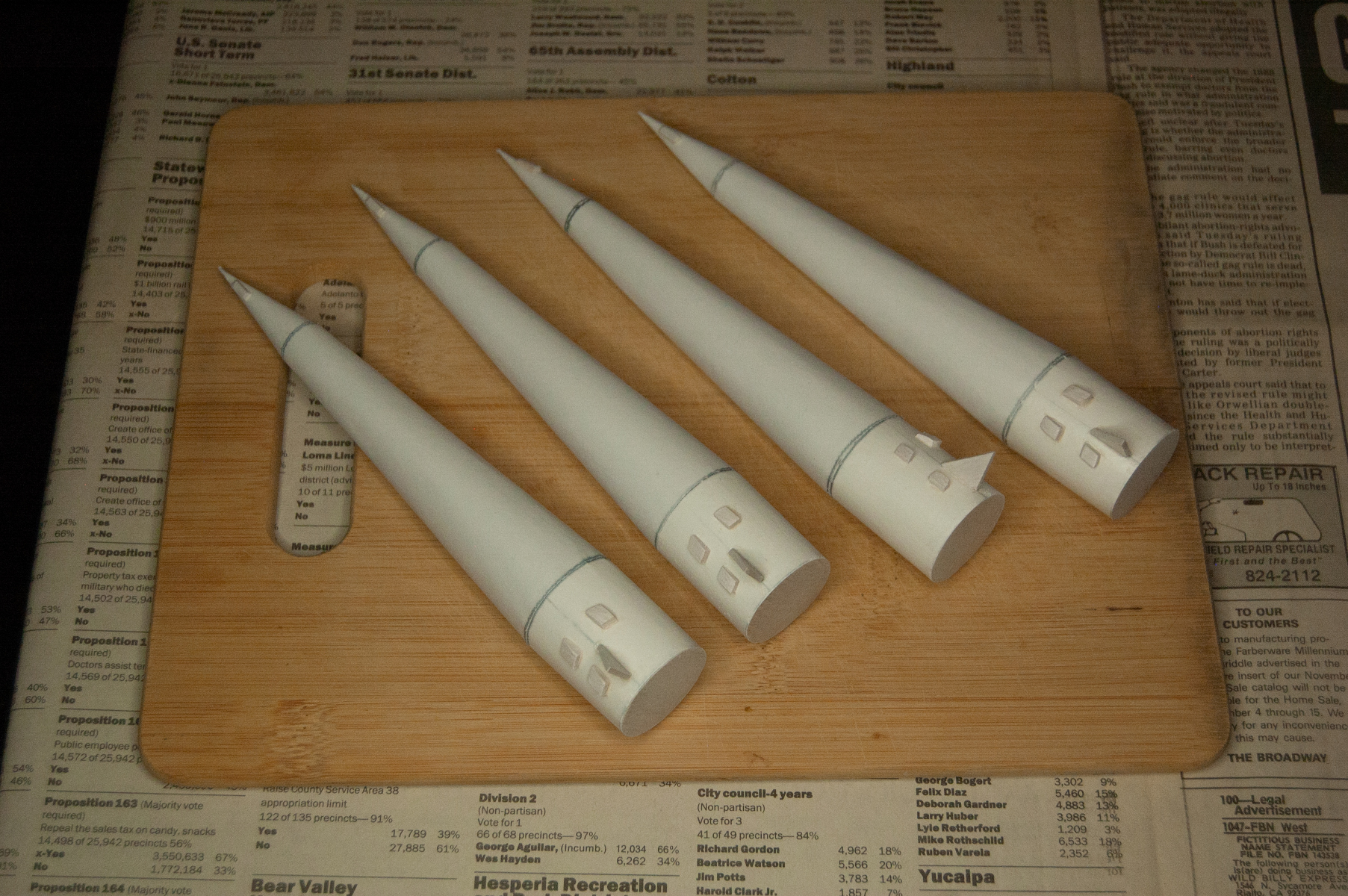
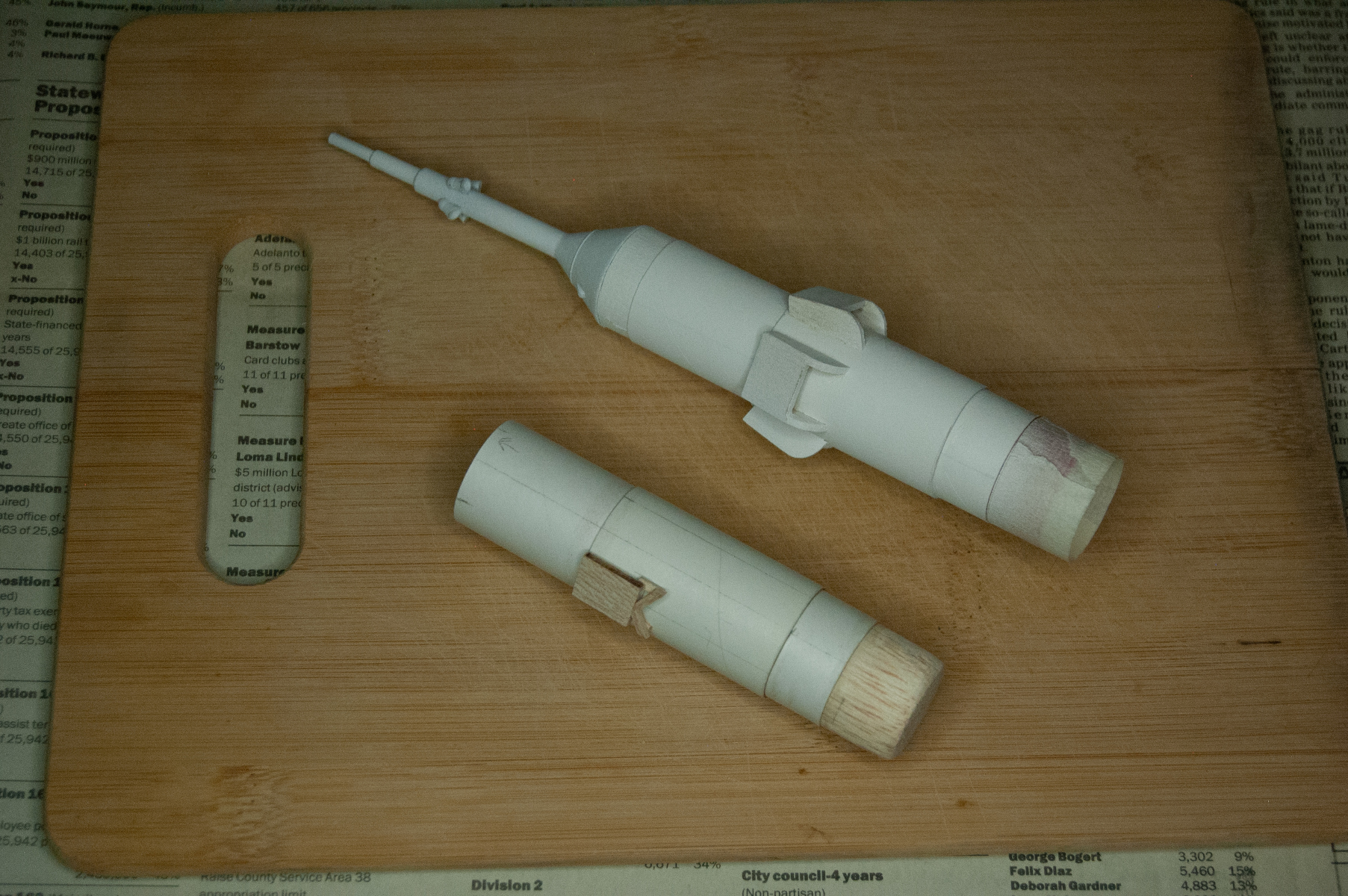
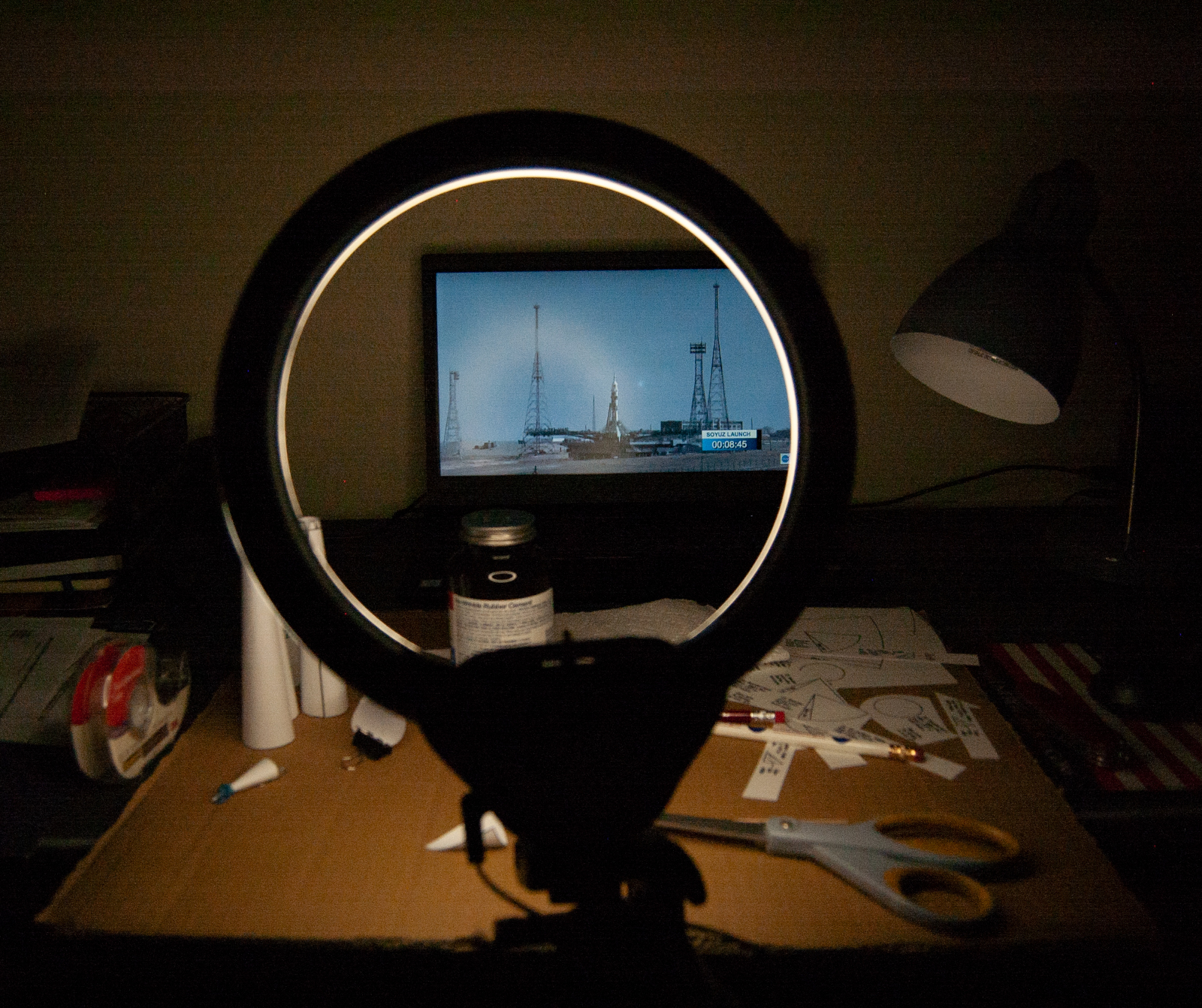
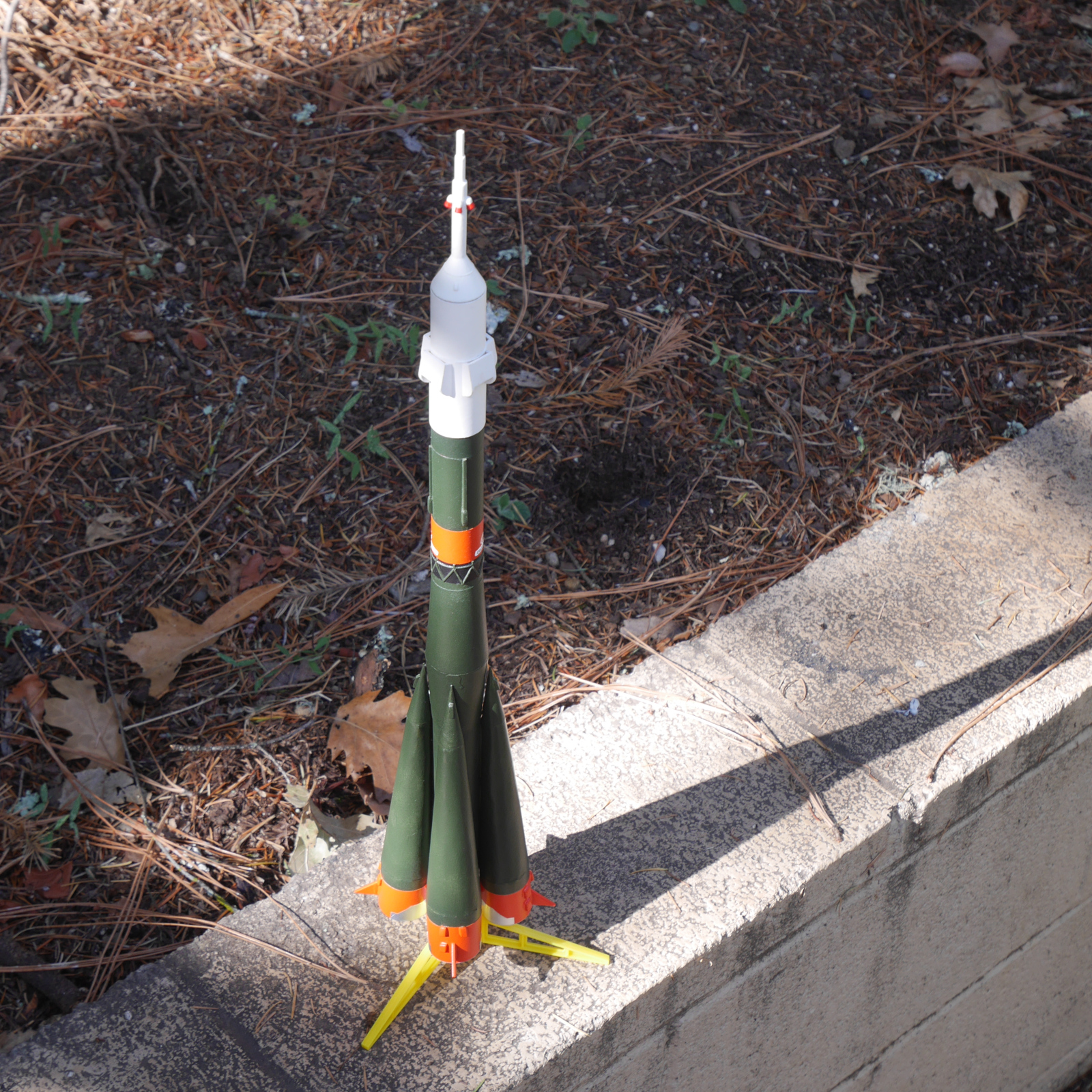
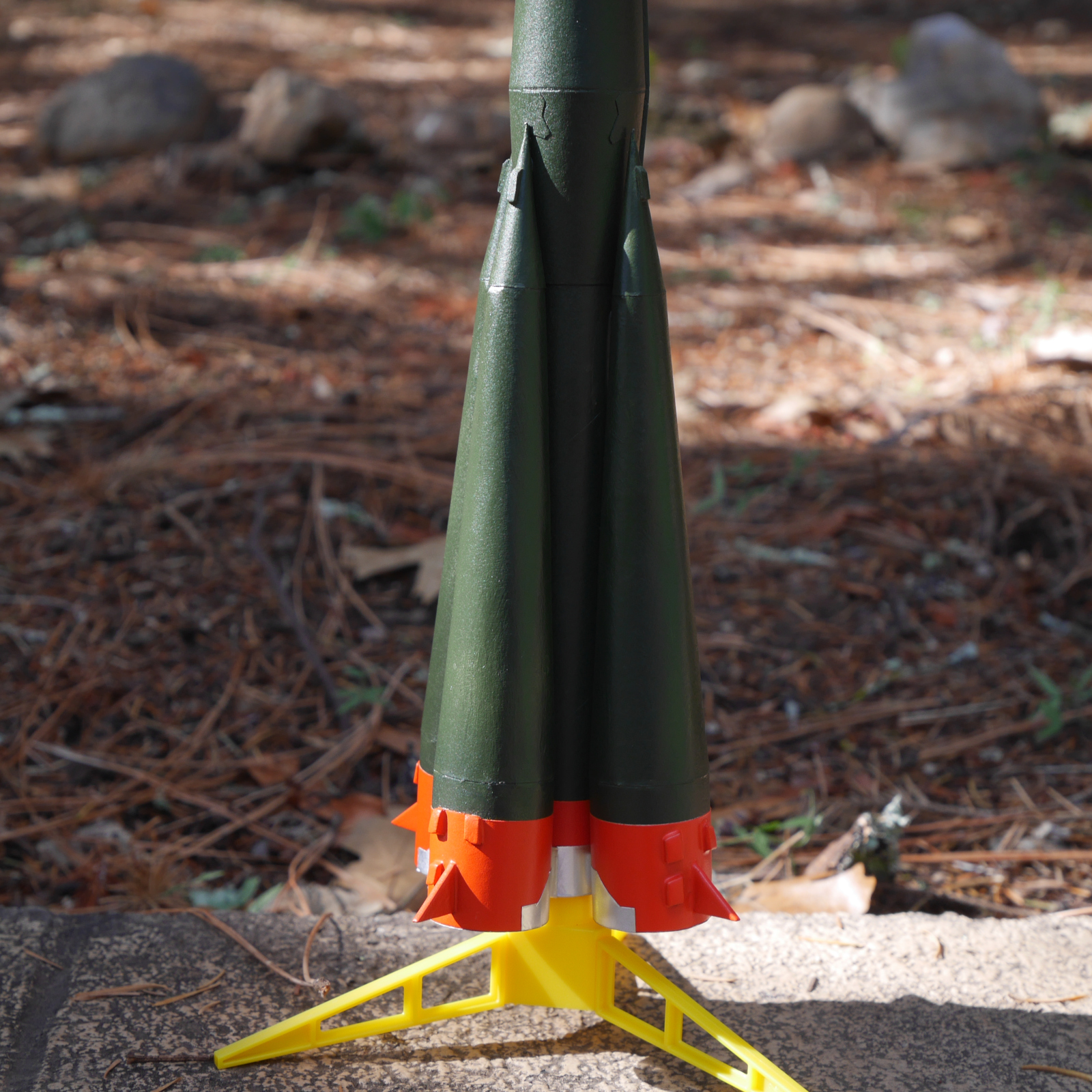
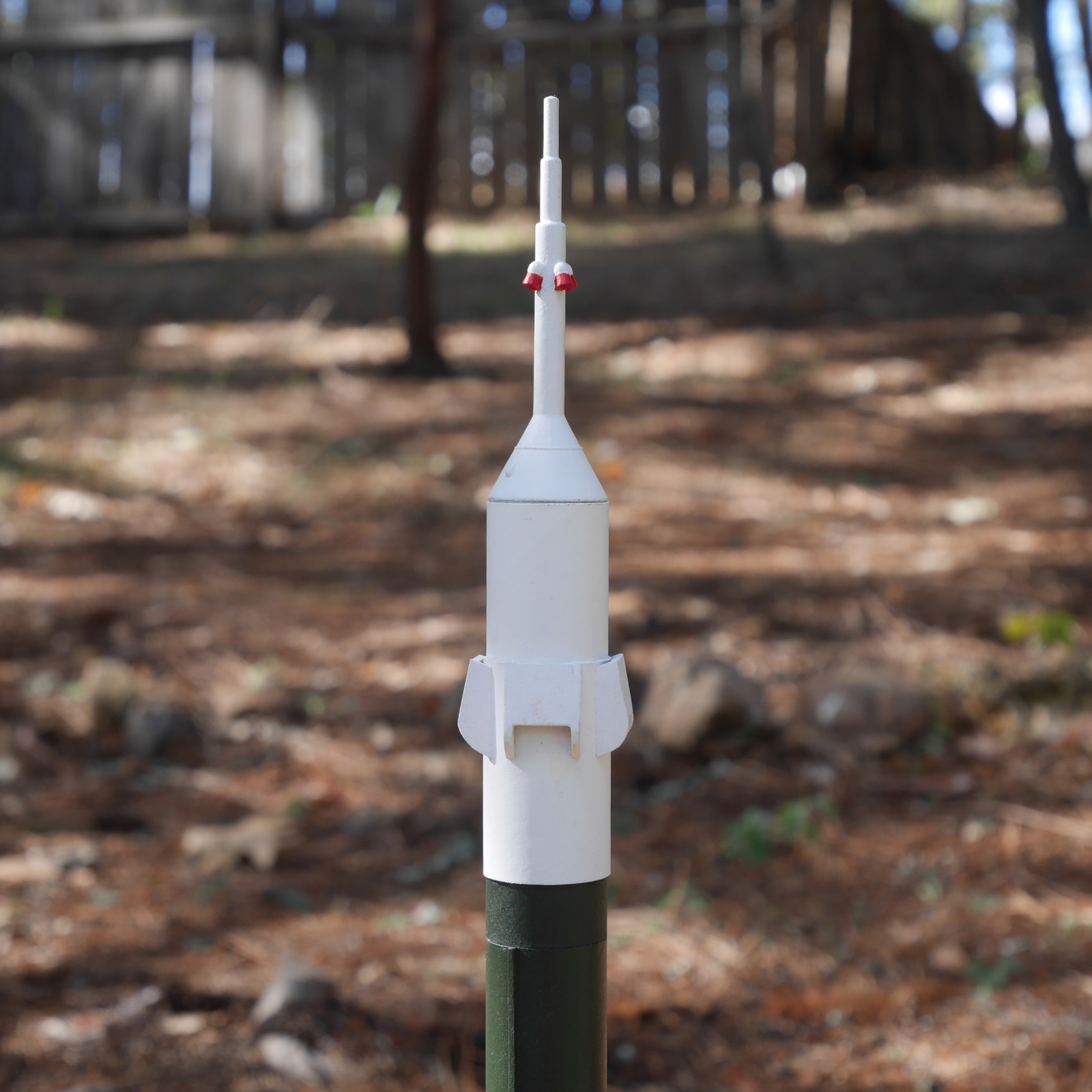

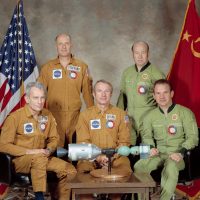

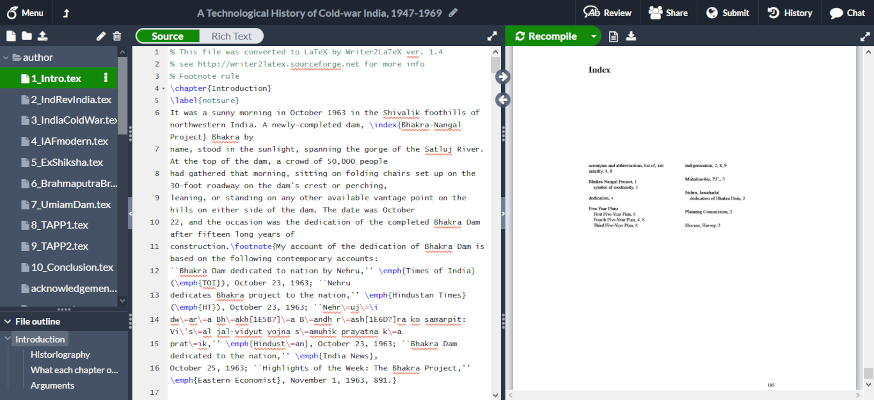
Max Weiss
Are you selling kits online?
Willy
Not at this time. It’s a good idea though! In the meantime, I’m happy to share my plans if you are interested.
Peter Alway
This looks very nice. It’s good to see my work put to such good use!
Willy
Thanks for the compliment, and for the Simplified Vostok plans that started it all!